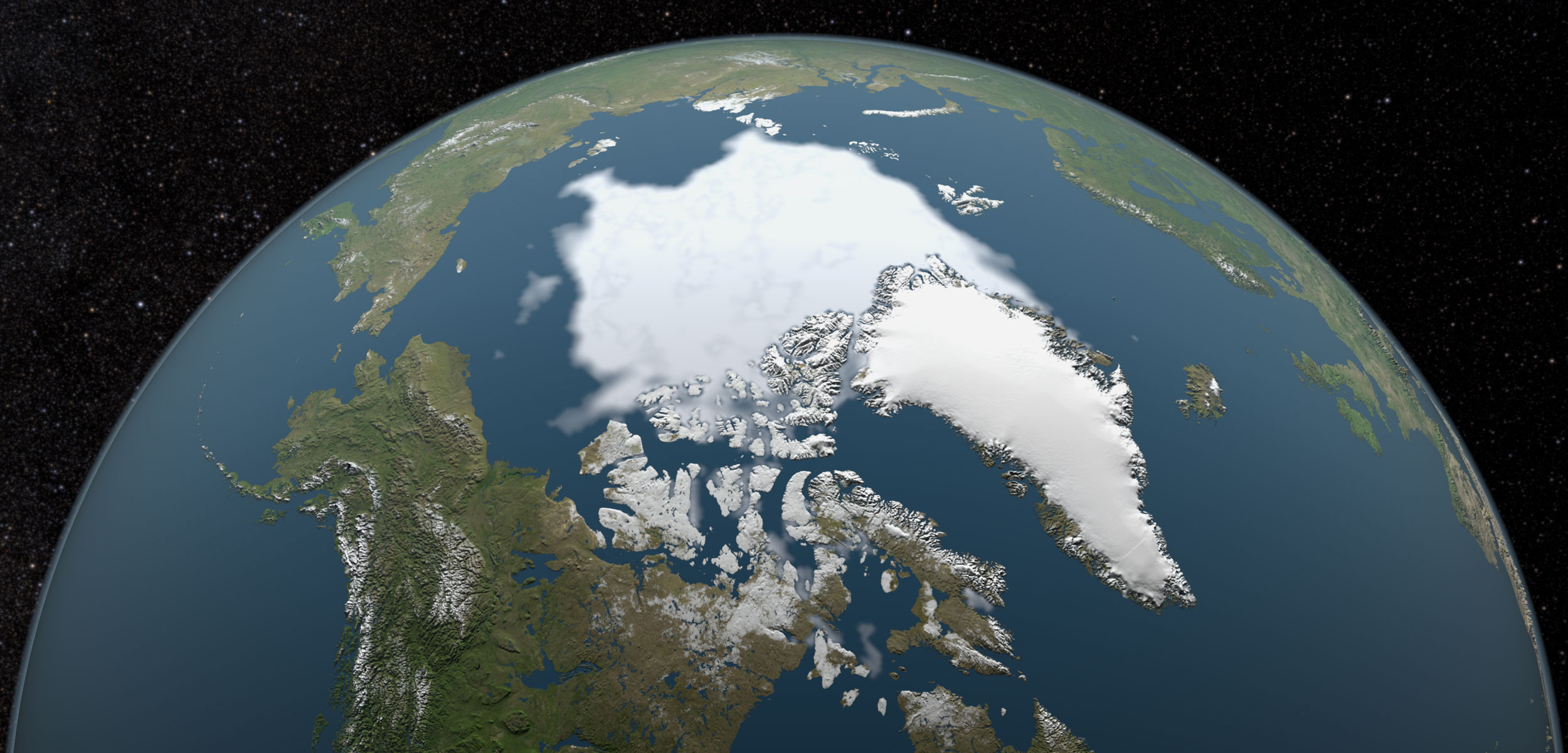How Melting Arctic Ice Could Cook the Tropics
The loss of sea ice from the Arctic Ocean will alter wind patterns and ocean currents, causing changes across the planet.
Article body copy
Every good horror movie needs a sequel, and the follow-up to the real-life 2015 disaster the Blob is coming soon. But this time, the deadly warming in the eastern Pacific Ocean is being produced by the Arctic.
Sea ice is disappearing from the Arctic Ocean, raising the alarm for scientists working in the region. They predict that by the middle of this century, parts of the Arctic Ocean will periodically be entirely ice-free in summer, drastically altering northern marine and terrestrial ecosystems.
But it’s not just the denizens of the Arctic that need to worry about this melting ice: a recent study shows that an ice-free Arctic Ocean could also cause warming across the northern and equatorial Pacific Ocean.
The study, which was conducted using an advanced climate model, shows that within 25 years the temperature from Alaska to Central America could be much warmer than it is now—a condition eerily reminiscent of the Blob, which caused mass carnage of marine life along North America’s Pacific coast from 2013 to 2016. The Blob reduced phytoplankton and zooplankton abundance, and caused mass die-offs of fish, marine mammals, and seabirds.
The difference between the Blob and this projected change is that the Blob came and went, says Eddy Carmack, a Canadian oceanographer who was not part of the study. This new research suggests the world is in for “a very, very different tropical ocean. And it’s permanent.
“The idea that Arctic sea ice loss can affect the midlatitudes is still under debate, but there is mounting evidence that this is the case,” says Carmack. This new research pushes the range of effects even farther—from the midlatitudes down into the tropics.
Explaining exactly how melting Arctic ice will cause warming in the tropical Pacific is not straightforward. After all, the water that flows out of the Arctic Ocean goes into the Atlantic, not the Pacific, so it’s not as simple as warm water flowing down south. Instead, the process that warms the Pacific is a type of “teleconnection” explains Paul Kushner, a physicist at the University of Toronto who leads the Canadian Sea Ice and Snow Evolution Network and is unaffiliated with the study.
A teleconnection is the name given to a process whereby a change in one part of the ocean or atmosphere affects the conditions in a distant place days, months, or even years later. The movements of heat, energy, and particles in the oceans and atmosphere are incredibly complex, but many such teleconnections are common and well recognized. For example, aerosol pollution or a volcanic eruption, which both increase how much sunlight is reflected by the atmosphere, can cause changes in rainfall and temperature thousands of kilometers away, months later. “Teleconnections aren’t new, but what wasn’t known before this [study] was how those teleconnections from sea ice evolved over time,” Kushner says.
Tropical oceans, in particular, are highly sensitive to changes in atmospheric and oceanic systems because strong currents and winds coalesce near the equator, affecting ocean temperature and stratification. When sea ice is lost, the planet’s energy balance changes, Kushner says. The new modeling study shows that the disappearance of ice from the Arctic causes changes in wind patterns, which in turn change the ocean’s temperature in the tropical and subtropical Pacific.
In other words, we can expect that the sequel to the Blob will be, unsurprisingly, much worse than the original.

